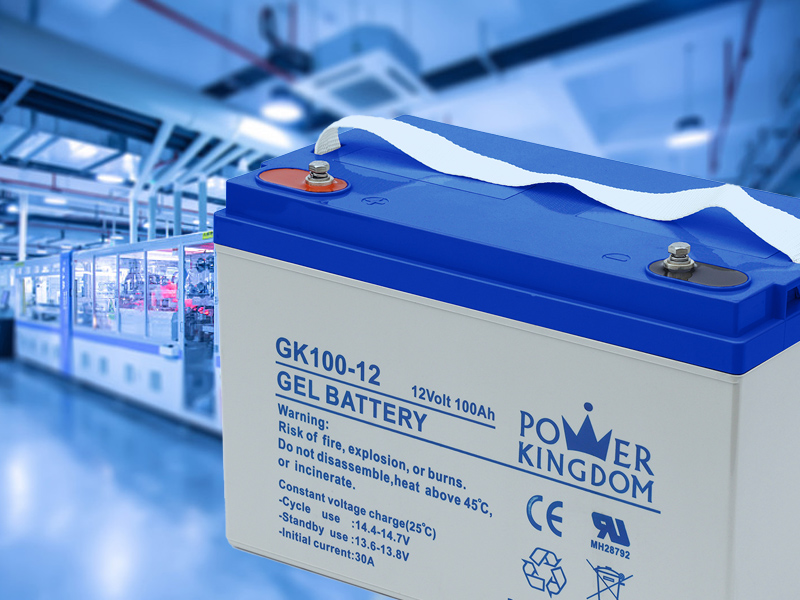
When discussing the application of lead-acid batteries, battery capacity is often mentioned, such as 100AH/12V, 1000AH/2V, etc. So, what does 100AH mean? A stands for the unit of current (amperes), and H stands for hours. Does 100AH mean that the battery can discharge at 100A for 1 hour? Or does it mean it can discharge at 1A for 100 hours?
Reference Standard: GB/T 19638.1-2014 Stationary Valve-Regulated Lead-Acid Batteries
Let's first look at the definition of battery capacity:
Actual capacity is the amount of electrical energy delivered by a battery or battery system under specified discharge hours, cutoff voltage, and temperature conditions, expressed in ampere-hours (Ah), with the symbol Ca. Here, "a" indicates the number of hours, and the symbol Ia represents the discharge current. Due to the chemical reaction characteristics of batteries, the relationship between discharge time T (in hours h) and capacity is non-linear. The actual battery capacity is given by the formula Ca = Ia * T, which means the actual battery capacity equals the discharge current multiplied by the discharge time.
Rated capacity according to standard 19638.1 specifies the amount of electrical energy (C10) that a battery can deliver under a 10-hour discharge rate, with a discharge current of I10, a cutoff voltage of 1.8V (the rated voltage of a single battery cell is 2V, and a 12V battery contains 6 cells, making the cutoff voltage 1.8 * 6), and a temperature of 25℃ ± 5℃.
Therefore, the commonly referred to "capacity" is the battery's rated capacity, indicating the amount of electrical energy the battery can deliver over a 10-hour discharge period.
Thus, 100AH means that the battery, when discharged over 10 hours at a discharge current of 10A, will output an amount of energy equal to 10 * 10 = 100AH. Similarly, 75AH means that the battery, when discharged over 10 hours at a discharge current of 7.5A, will output an amount of energy equal to 7.5 * 10 = 75AH.
Due to the non-linear relationship between discharge time T (in hours h) and capacity, if the battery is discharged over 1 hour, a 100AH battery can only deliver 0.55C10 of energy, which equals 55AH. Therefore, the discharge current at this time would be 55A. Conversely, discharging at 100A cannot achieve 1 hour of discharge, and it cannot be simply interpreted as discharging at 1A over 100 hours.
Other Discharge Time Standards:
C10: 10-hour rate rated capacity, with a cutoff voltage of 1.8V, the value is 1.00C10, expressed in ampere-hours (Ah);
C3: 3-hour rate rated capacity, with a cutoff voltage of 1.7V, the value is 0.75C10, expressed in ampere-hours (Ah);
C1: 1-hour rate rated capacity, with a cutoff voltage of 1.6V, the value is 0.55C10, expressed in ampere-hours (Ah);
I10: 10-hour rate discharge current, the value is 0.1C10, expressed in amperes (A);
I3: 3-hour rate discharge current, the value is 0.25C10, expressed in amperes (A);
I1: 1-hour rate discharge current, the value is 0.55C10, expressed in amperes (A);
Note: Standard GB/T 19638.1-2014 for stationary valve-regulated lead-acid batteries specifies the 10-hour rate rated capacity, generally applicable to batteries of 38AH and above in the market.
Standard GB/T 19639.1-2014 for general valve-regulated lead-acid batteries specifies the 20-hour rate rated capacity, generally applicable to batteries of 38AH and below in the market.
Copyright © 2025 Shenzhen Power Kingdom Co., Ltd. | All Rights Reserved 粤ICP备2023084283号-1
We are here to help you! If you close the chatbox, you will automatically receive a response from us via email. Please be sure to leave your contact details so that we can better assist